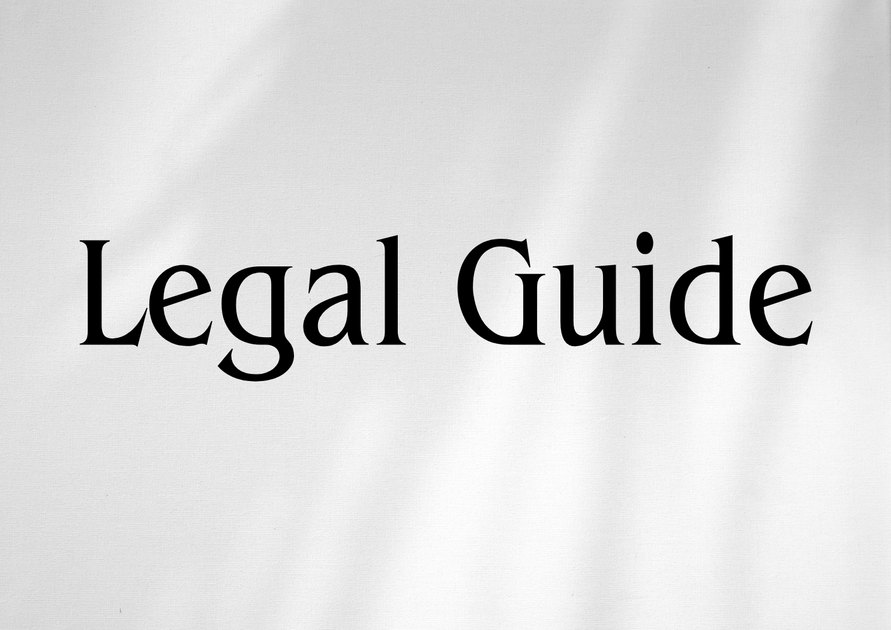Introduction: Understanding the Taxation of Aircraft and Aviation Assets in Qatar and Its Relevance to the UAE
The taxation landscape for aircraft and aviation assets has become increasingly complex amid dynamic legal reforms across the GCC region. For UAE-based businesses, airlines, asset managers, lessors, and financiers, comprehending the taxation framework under Qatari law offers valuable insights into cross-border aviation transactions, risk exposure, and compliance imperatives. This is particularly relevant with growing integration in regional airspace, the expansion of national carrier networks, and a surge of cross-jurisdictional leasing, financing, and investment deals involving the UAE and Qatar. In 2025, shifts in aviation sector regulation—driven by Qatar’s ongoing economic diversification and the UAE’s adoption of progressive tax legislation—underscore the need for technical understanding backed by robust legal counsel. The following analysis presents a consultancy-grade guide on how Qatari law governs taxation for aircraft and aviation assets, highlighting its implications for UAE entities active in the aviation sector. Readers will find a holistic breakdown of legal provisions, risk analysis, compliance strategies, and best practices, ensuring informed decision-making and sound risk management.
Table of Contents
- Overview of Qatari Law Governing Aviation Asset Taxation
- Aircraft and Aviation Assets: Legal Definitions and Scope
- Direct Taxation: Corporate Income and Withholding Tax in Qatar
- Indirect Taxation: Customs Duties and VAT on Aircraft and Spare Parts
- Double Taxation and International Treaties Relevant to UAE-Qatar Transactions
- Comparison: Qatari vs UAE Aviation Taxation Frameworks
- Practical Scenarios and Case Studies
- Risks of Non-Compliance and Penalty Regime
- Compliance Strategies and Recommendations for UAE Businesses
- Conclusion: Forward-Looking Insights and Best Practice Guidance
Overview of Qatari Law Governing Aviation Asset Taxation
Key Legislation and Regulatory Context
The primary legal framework governing the taxation of aircraft and related aviation assets in Qatar comprises:
- Income Tax Law (Law No. 24 of 2018), as amended
- Qatar Civil Aviation Law (Law No. 15 of 2002) regulating aviation registration and operation
- Customs Law (Law No. 40 of 2002)—impacting imports, parts, and exemptions
- A network of international double taxation treaties (including Qatari-UAE agreements)
The Qatar Civil Aviation Authority (QCAA) and the General Tax Authority (GTA) are the principal regulators. Their guidance is pivotal when advising on aircraft leases, ownership transfers, financing, and cross-border asset management for UAE-based stakeholders.
Aircraft and Aviation Assets: Legal Definitions and Scope
What Constitutes an Aircraft or Aviation Asset under Qatari Law?
For tax and customs purposes, Qatari law distinguishes between:
- Aircraft (registered, both for commercial and private use)
- Engines, spare parts, avionics, and related ground equipment
- Aviation support services assets (ground handling equipment, maintenance tooling, etc.)
Registration with the QCAA is mandatory for aircraft operating in Qatari airspace. For tax, the crucial question is whether the asset is used for Qatari-source income, owned by a Qatari tax resident, or imported into Qatari customs territory.
Expert Insight
For lessors, financiers, and UAE-based cross-border operators, asset classification directly impacts the applicable tax regime. Legal counsel should closely analyze each asset’s role within business structures and supply chains.
Direct Taxation: Corporate Income and Withholding Tax in Qatar
Corporate Income Tax Framework (Law No. 24 of 2018)
Under the Qatari Income Tax Law, most corporate entities are subject to a flat tax rate of 10% on taxable income derived from Qatari sources. Special rules apply to sectors such as oil and gas, but aviation is subject to the general regime unless qualifying for exemption.
Taxation of Aircraft Leasing and Ownership
- Income from the operation or leasing of aircraft within/into Qatari territory is deemed Qatari-sourced, triggering tax on foreign lessors or service providers unless exempted by treaty.
- Sale or transfer of aviation assets, when sourced in Qatar, may be taxable (including potential capital gains depending on structuring).
Withholding Tax (WHT) Obligations
Article 9 of the Income Tax Law imposes a 5% WHT on payments to non-residents for services performed in Qatar. For cross-border aviation (e.g., lease rentals, maintenance, technical consultancy), WHT implications must be assessed unless overridden by tax treaties.
Hypothetical Example
A UAE lessor receives monthly lease payments from a Qatari airline for an aircraft based in Doha. Unless the UAE-Qatar tax treaty provides relief, a 5% WHT generally applies. Failure to apply or collect this leads to penalties for both payer and payee.
Consultancy Perspective
Businesses must structure contracts with clear allocation of tax liabilities, anticipate gross-up provisions, and maintain robust documentation to defend their tax position during audits.
Indirect Taxation: Customs Duties and VAT on Aircraft and Spare Parts
Customs Duties (Law No. 40 of 2002)
Qatar applies GCC-wide customs rules, generally imposing a 5% duty on imports. However, aircraft and major aviation components benefit from sector-specific exemptions as per Ministerial Resolutions and QCAA practice.
VAT: Current Status and Advisory
Qatar has not yet implemented Value Added Tax (VAT), but the GCC VAT Framework Agreement provides for future application, with possible exemptions for international transport and certain aviation assets. UAE-based businesses should anticipate that VAT rules may soon impact aviation-related transactions with Qatar.
Table: Current Indirect Tax Treatment of Aircraft and Spare Parts
| Asset Type | Customs Duty | VAT |
|---|---|---|
| Aircraft (registered for airline use) | Generally exempt | Not applicable (2024) |
| Spare parts/engines | Possible exemption (with CAA approval) | Not applicable (2024) |
| Business jets/private aircraft | Likely subject to duty | Not applicable (2024) |
Visual Suggestion
Suggested Visual: Process diagram illustrating import customs clearance steps for aircraft and aviation parts in Qatar, including exemption application and documentation flow.
Double Taxation and International Treaties Relevant to UAE-Qatar Transactions
UAE-Qatar Double Taxation Agreement (DTA)
The UAE and Qatar are party to a DTA, designed to alleviate risks of double taxation and reduce cross-border WHT. Key aviation-specific benefits include:
- Exemption or reduction of WHT on payments for international transportation (typically aligned with OECD Model provisions, Article 8)
- Dispute resolution mechanisms for tax residency and permanent establishment issues
Practical Guidance for UAE Operators
It is crucial to maintain certificate of tax residency documents, correct DTA claim forms, and contract clauses allocating DTA benefits. Failure to meet procedural requirements may forfeit treaty relief and trigger costly tax leakage.
Comparison: Qatari vs UAE Aviation Taxation Frameworks
| Criteria | Qatar | UAE (as of 2025) |
|---|---|---|
| Corporate Income Tax (CIT) on aviation activity | 10% flat rate | 9% federal CIT (with exemptions for qualifying free zones) |
| Withholding Tax on payments to non-residents | 5% standard, treaty-reduced for aviation | No formal WHT regime (2024), but future adoption expected per UAE Ministry guidance |
| Customs duty on aircraft/parts | Generally exempt for airlines | Exempt for national and international airline use |
| VAT | Not implemented | 5% VAT with zero rating for international transport; careful asset use analysis required |
Expert Note: UAE legal practitioners must keep abreast of future tax policy shifts, as the landscape is subject to rapid change and increased regulatory convergence within the GCC.
Practical Scenarios and Case Studies
Case Study 1: Cross-Border Aircraft Leasing
Scenario: A UAE-based lessor enters a wet lease agreement with a Qatari airline. The parties need to allocate tax risk, navigate Qatari WHT, and utilize the DTA. Proper clause drafting and residency certification save 5% in withholding tax, improving yield on the asset.
Case Study 2: Spare Parts Importation
Scenario: A maintenance provider in Qatar imports serialized aircraft engines from the UAE. Each shipment is processed with CAA exemption certificates, avoiding customs duties. Failure to renew exemption status would have resulted in a 5% customs levy and shipment delays, highlighting the importance of ongoing regulatory compliance.
Case Study 3: Sale of Surplus Aircraft
Scenario: A Qatari air charter operator sells an aging aircraft to a UAE private buyer. Planning secures treaty relief and proper VAT documentation (for future compliance), avoiding double taxation and post-sale litigation risk.
Risks of Non-Compliance and Penalty Regime
Legal, Financial, and Operational Risks
Risks include:
- Significant tax penalties—ranging from 100% of unpaid tax plus interest (per GTA Enforcement Circulars)
- Asset seizure or detainment at Qatari customs
- Restriction or suspension of air operator certificates by QCAA
- Loss of ministerial exemptions for future aircraft or parts imports
- Damage to reputation and commercial partnerships across GCC aviation markets
Penalty Comparison Table
| Compliance Failure | Qatari Penalty | UAE Penalty |
|---|---|---|
| Failure to deduct WHT | 100% of tax due, potential blacklisting | n/a (2024), expected under upcoming CIT guidance |
| Customs duty evasion | Double the value of duty plus confiscation | Heavy fines/expulsion from customs regime |
| Improper DTA documentation | Loss of DTA benefit, full tax liability imposed | Loss of double tax relief, penalties as updated by UAE Federal Decree-Law No. 47 of 2022 on Tax Procedures |
Compliance Strategies and Recommendations for UAE Businesses
Key Consultancy Insights for Sustainable Compliance
- Transaction Structuring: Pre-transaction analysis is critical, including aviation asset routes, payment flows, and tax residency status.
- Contract Design: Express tax gross-up, DTA claim, and documentation clauses in aircraft lease, finance, and sale agreements.
- Document Control: Maintain certified tax residency, ministerial exemption permits, and all relevant QCAA filings for audit readiness.
- Regular Legal Reviews: Conduct periodic audits of operations, customs clearance, and tax filing practices to catch regulatory changes (monitor updates from the Qatar General Tax Authority and UAE Federal Tax Authority).
- Engage Expert Advisors: Liaise with specialized aviation legal, tax, and customs practitioners for cross-border and multi-jurisdictional deals.
Visual Suggestion
Suggested Visual: Compliance checklist graphic with key action items for UAE-based aviation operators engaging in cross-border Qatar transactions.
Conclusion: Forward-Looking Insights and Best Practice Guidance
The tax treatment of aircraft and aviation assets under Qatari law presents both risks and opportunities for UAE aviation stakeholders. Given the current climate of regulatory reform, businesses require a nuanced grasp of tax law, proactive contract structuring, and continuous compliance diligence. Future developments—including the possible introduction of VAT in Qatar, the tightening of GCC tax treaty networks, and the increasing digitization of customs and tax administration—will continue to reshape the cross-border aviation sector. The expert recommendation is clear: maintain dynamic compliance systems, monitor legal updates, and engage subject matter advisors to secure competitive advantage and risk mitigation in a fast-evolving regulatory landscape.
For UAE firms transacting in Qatar, a proactive and informed approach to aviation asset taxation is central to operational continuity, cost containment, and legal compliance as the GCC sector matures.




